למה חשוב בזבוז
ממשל
50
מתקנים משיגים אפס
פסולת להטמנה
המאמצים שלנו לצמצם את הפסולת הם גלובליים, כאשר כל מתקן פועל לקראת היעד שלנו לשנת 2025.
בשנת 2021, מועצת המנהיגות של Greif החלה לפקח על חמישה נושאי קיימות, כולל פסולת, במאמץ להאיץ עוד יותר את אסטרטגיית ה-ESG שלנו. כעת אנו מדווחים על בזבוז בכל רבעון לצוות ההנהגה המנהלית. הוספנו גם KPI בזבוז לכרטיס המידע הארגוני של Greif ולדוחות החודשיים המשותפים עם מנהלים ומעקב אחריהם באמצעות כרטיס הניקוד של Greif Business System (GBS) ו-Must Win Battle (MWB). צוות הפסולת העולמי, המורכב מעמיתים של Greif מכל יחידה עסקית ואזור, נפגש מדי חודש כדי לדון באסטרטגיות הפחתת הפסולת שלנו. צוות הפסולת מטיל אחריות על ניהול המתקנים לניהול וצמצום הפסולת. Greif מיישמת אסטרטגיות מעורבות עמיתים כדי להעצים עמיתים לייצור להתמקד בהפחתת פסולת. של גרייף בריאות ובטיחות סביבתית (EHS) מדיניות, נהלים והדרכה מסדירים את הסימון, הטיפול, האחסון וההובלה של פסולת מסוכנת.
בשנת 2021, 54 מפעלים ערכו סיור וירטואלי שכלל שיתוף מידע על קיימות, כולל פסולת. חברי צוות ההנהלה של Greif וצוות ההנהגה של GIP השתתפו בסיורים הוירטואליים כדי לספק שיתוף פעולה ולתמוך בהתקדמות המתמשכת שלנו בניהול הפסולת.
מערכת ניהול התאימות (CMS) של Greif מאפשרת לנו לאסוף נתונים, לנטר ביצועים ולמדוד התקדמות בצורה מדויקת ויעילה. בשנת 2020 ולתוך 2021, שיפרנו את היכולת שלנו להציג ולנהל נתוני פסולת ב-CMS על ידי מתן גישה חודשית לנתונים. זה מאפשר לכל מתקן לקבל תובנות לגבי נתונים מהר יותר וליישם תוכניות לאורך השנה. כחלק מה-CMS שלנו, אנו דורשים מכל המתקנים לדווח על נתוני פסולת חודשיים, להגיש חשבוניות לאימות בנוסף למפות הדרכים. נתוני הפסולת שלנו כפופים להערכה ואימות על ידי צוות הביקורת הפנימית שלנו כדי להבטיח עקביות ואמינות.
עבור כל מתקני האריזה התעשייתית העולמית (GIP), אנו מקיימים מטריצת פסולת מפורטת כדי לעזור לנו להבין את זרמי הפסולת של כל מתקן, את שיטת הסילוק של כל זרם פסולת (מיחזור, שימוש חוזר, הטמנה וכו') ולנהל את ההתקדמות. מטריצות הפסולת משמשות ככלי שיתוף פעולה המאפשר למתקנים להשוות ניהול של זרמי פסולת נפוצים. בשנת 2021, עסקי ה-PPS שלנו החלו בתהליך של פיתוח מטריצות, המאפשרות אינטגרציה כלל החברה של נתוני הפסולת והתוכניות שלנו. כחלק מתהליך זה, בנינו בסיס של חינוך והדרכה בכל עסק ה-PPS שלנו, כולל הדרכות על הזנת נתונים וזיהוי זרמי פסולת. מאמצים אלו אפשרו למספר מתקנים שלנו להגיע או להתקדם משמעותית לקראת המטרה שלנו להסיט 90 אחוז מהפסולת ממזבלות בכל המתקנים. נשלים את מטריצות הפסולת שלנו עבור כל מתקני PPS בשנת 2022.
מתקנים שעדיין לא הגיעו ליעד הסטת הפסולת שלנו לשנת 2025 אחראים ליצירת מפת דרכים רבעונית או חצי שנתית להערכת כל זרמי הפסולת העוברים להטמנה ולפתח אסטרטגיית הסחה. כל מתקן כולל לפחות את שלושת הפרויקטים המובילים להטיית פסולת ודוחות על הפחתת עלויות נלוות, הפחתת פסולת למזבלה וסטטוס של כל פרויקט. מפות הדרכים שלנו להפניית הפסולת מספקות תובנות נהדרות לגבי המתקנים שלנו והתקדמות ניהול הפסולת שלהם, ומסייעות למתקנים לשפר את הביצועים משנה לשנה. מפות הדרכים שלנו ממלאות תפקיד קריטי ביכולת שלנו להגיע ליעד הפניית הפסולת שלנו, מה שמאפשר לכל מתקן להבין את צרכי ניהול הפסולת שלו ולזהות פעולות לשיפור. הדרכת פסולת לצוות היא מרכיב מרכזי נוסף לשיפור מתמיד בהשגת אסטרטגיית הפסולת והיעדים שלנו.
Greif שיתף פעולה עם Operation Clean Sweep (OCS) כדי להרחיב את המחויבות שלנו לצמצום פסולת פלסטיק. באמצעות השותפות, אנו מתחייבים לערוך ביקורות במתקנים שלנו כדי להעריך את פעולות הטיפול בשרף הפלסטיק שלנו וליישם שיטות עבודה מומלצות לניקיון בית ולכלילת גלולות, פתיתים ואבקות. ביקורות של צד שלישי נערכו במיקומים שלנו בהאזלטון, פנסילבניה, יוסטון, טקסס והר סטרלינג, קנטקי משנת 2017 עד 2019, לפני שהושהו עקב מגיפת COVID-19. כל המתקנים עברו את המשך הביקורות הפנימיות שלנו ואנו נתחיל מחדש את הביקורות של צד שלישי ב-2022.
מטרות והתקדמות
בשנת 2018, יצרנו יעד להסיט 90 אחוז מהפסולת ממזבלות מכל מתקני הייצור של Greif ברחבי העולם עד סוף שנת הכספים 2025. בשנת 2020, התחלנו לכלול גם נתוני פסולת ממתקני Caraustar הוותיקים שלנו, והרחבנו את המטרה שלנו לכסות את כל הארגון שלנו. ברחבי העולם, הסטנו 85 אחוז מהפסולת ממזבלות בשנת 2021 ו-149 מתקני Greif השיגו את יעד הפניית הפסולת שלנו. מתקנים אלה ממשיכים לשפר את שיטות ניהול הפסולת שלהם על ידי מינוף מטריצות פסולת ובאמצעות שיתוף פעולה הדוק עם מחזיקי העניין שלנו לתמיכה באסטרטגיית הכלכלה המעגלית שלנו. בשנת 2021, 60 מתקנים הגיעו ל-99+ אחוזי הטיה, מתוכם 50 מתקנים השיגו אפס פסולת להטמנה.
הִתקַדְמוּת:
|
שנת 2021* |
מתקנים עם הסטת 90%+ |
מתקנים עם הסטת 99%+ |
מתקנים עם אפס פסולת להטמנה |
|---|---|---|---|
|
סַך הַכֹּל |
149 |
60 |
50 |
|
צפון אמריקה |
74 |
17 |
12** |
|
אֵירוֹפָּה |
54 |
32 |
29** |
|
אמריקה הלטינית |
9 |
1 |
0 |
|
אסיה פסיפיק |
12 |
10 |
9 |
**נכללים נתונים מארבעה מתקנים שנסגרו ב-FY21
ביצועים
זרם פסולת
|
|
שנת 2018 |
שנת 2019 |
שנת 2020 |
שנת 2021 |
|---|---|---|---|---|
| פסולת מסוכנת | ||||
|
פסולת מוחלטת להטמנה |
1,639 |
2,428 |
3,608 |
1,033 |
|
פסולת להטמנה |
1,292 |
1,161 |
2,989 |
584 |
|
שריפה (ללא התאוששות אנרגיה)**** |
347 |
1,267 |
619 |
449 |
|
סה"כ לא מזבלה* |
14,105 |
20,725 |
19,199 |
14,207 |
|
נשרף (עם שחזור אנרגיה)** |
3,372 |
4,073 |
3,275 |
4,480 |
|
קומפוסטר*** |
0 |
0 |
1 |
0 |
|
ממוחזר† |
7,604 |
14,084 |
14,160 |
8,502 |
|
בשימוש חוזר†† |
1,513 |
651 |
706 |
482 |
|
נגבה††† |
217 |
366 |
376 |
172 |
|
שונות (לא מזבלה) †††† |
1,399 |
1,551 |
681 |
571 |
|
סַך הַכֹּל פסולת מסוכנת |
15,744 |
23,153 |
22,807 |
15,240 |
|
פסולת לא מסוכנת |
||||
|
פסולת מוחלטת להטמנה |
54,594 |
33,837 |
137,211 |
155,367 |
|
פסולת להטמנה |
54,110 |
33,380 |
137,066 |
155,148 |
|
שריפה (ללא התאוששות אנרגיה)**** |
485 |
457 |
151 |
218 |
|
סה"כ לא מזבלה* |
257,219 |
184,357 |
326,546 |
842,268 |
|
נשרף (עם שחזור אנרגיה)** |
2,054 |
2,950 |
17,006 |
13,409 |
|
קומפוסטר*** |
35 |
15,784 |
49,734 |
54,132 |
|
ממוחזר† |
231,997 |
141,217 |
212,075 |
727,737 |
|
בשימוש חוזר†† |
11,641 |
12,321 |
19,441 |
18,445 |
|
נגבה††† |
9,439 |
9,847 |
11,701 |
12,192 |
|
שונות (לא מזבלה)†††† |
2,052 |
2,239 |
16,589 |
16,354 |
|
סה"כ פסולת לא מסוכנת |
311,813 |
218,194 |
463,757 |
997,634 |
|
פסולת כוללת (מסוכנת ולא מסוכנת) |
327,557 |
241,347 |
486,564 |
1,012,874 |
הערות:
- מתקני Caraustar מדור קודם שולבו בדיווח הפסולת בשנת 2020.
- סך הפסולת והמחזור הלא מסוכן הוכפל השנה עקב הכללת נתונים נוספים ממתקני RFG; בשנה שעברה כללו RFG ו-IPG נתונים מזרמי הפסולת התפעוליים שלהם. עם זאת, RFG אוספת גם פסולת נייר מהשוק וממחזרת אותה.
*ללא הטמנה: כולל שיטות טיפול כימיות-פיזיקליות, שריפה עם שחזור אנרגיה, ממוחזר, בשימוש חוזר, ממוחזר, קומפוסט ומיזוג דלקים.
**שריפה (עם שחזור אנרגיה): שיטת טיפול הכוללת בעירה של פסולת מוצקה המביאה ללכידת אנרגיה.
***קומפוסטר: שיטת טיפול הכוללת פירוק ביולוגי של פסולת תפעולית מוצקה או נוזלית.
**** שריפה (ללא שחזור אנרגיה): שיטת טיפול הכוללת בעירה של פסולת מוצקה שאינה מביאה ללכידת אנרגיה.
†ממוחזר: שיטת טיפול הכוללת הפרדה, הכנה ומכירה של חומרים הניתנים למחזור ליצרני משתמש קצה.
††שימוש חוזר: שיטת טיפול הכוללת שימוש בחומר למטרה המקורית שלו מספר פעמים.
†††Reclaimed: שיטת טיפול הכוללת תהליך של מיצוי והמרת חומרים מחומרים ממוחזרים לשימוש חוזר.
†††† שונות (ללא הטמנה): כל שיטות הטיפול האחרות שלא הוזכרו קודם לכן, כולל הזרקת באר עמוק ואחסון באתר.
מתקן גרייף יוסטון
מתקן Greif ביוסטון ראה שיפור ניכר ביכולתו להסיט פסולת מהטמנה במהלך 2021. המתקן התקין De-chimer, התקן שנועד להסיר בבטחה וביעילות את פעמוני המתכת המשמשים לאבטחת החלק העליון והתחתון של תופי הסיבים. לאחר הסרת פעמונים, ניתן להפנות את הסיבים והמתכת לזרמי פסולת נפרדים למחזור. מאז התקנת ה-de-chimer ביולי 2021, המתקן הסיט יותר מ-90 אחוז מהפסולת שלו ממזבלות. המתקן שולח את הסיבים לקבוצת המחזור PPS שלנו, מה שמפחית עוד יותר את עלות פינוי הפסולת.
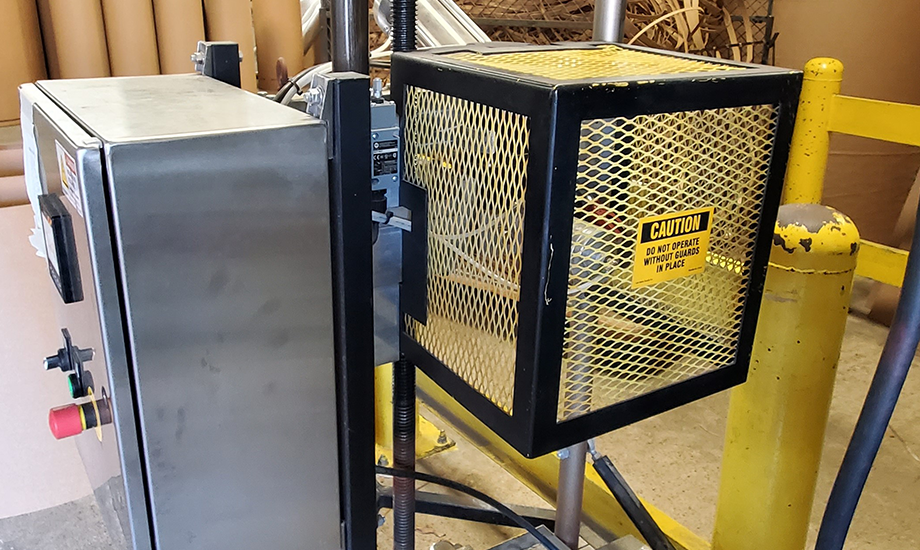
Greif Hadımköy מגיע ועולה על יעד הפניית פסולת של 90 אחוז
במהלך 2020, צוות Hadımköy בטורקיה פיתח מפת דרכים לפסולת על ידי הערכת זרמי הפסולת שלהם וקביעת נתיב להפחתת הפסולת שלהם למזבלה. צוות Hadımköy הציג פחי הפרדה לפסולת נייר בייצור, הפריד שאריות מזון ושלח אותן למקלטים מקומיים לבעלי חיים, והכניס פחי הפרדה לאריזות ופסולת נייר בקפיטריה. בסך הכל, מאמצים אלו הביאו להפחתה של שבעה אחוזים בפסולת שלהם להטמנה. עד סוף 2020, Hadımköy השתמשה בפרויקטים במפת הדרכים של הפסולת שלהם כדי לצמצם עוד יותר את הפסולת שלהם להטמנה בחמישה אחוזים נוספים וכבר עברה את יעד הפסולת של החברה ל-2025. בשנת 2021, Hadımköy הפחיתה עוד יותר את הפסולת שנשלחה להטמנה ב-15 אחוזים נוספים מהשנה הקודמת.
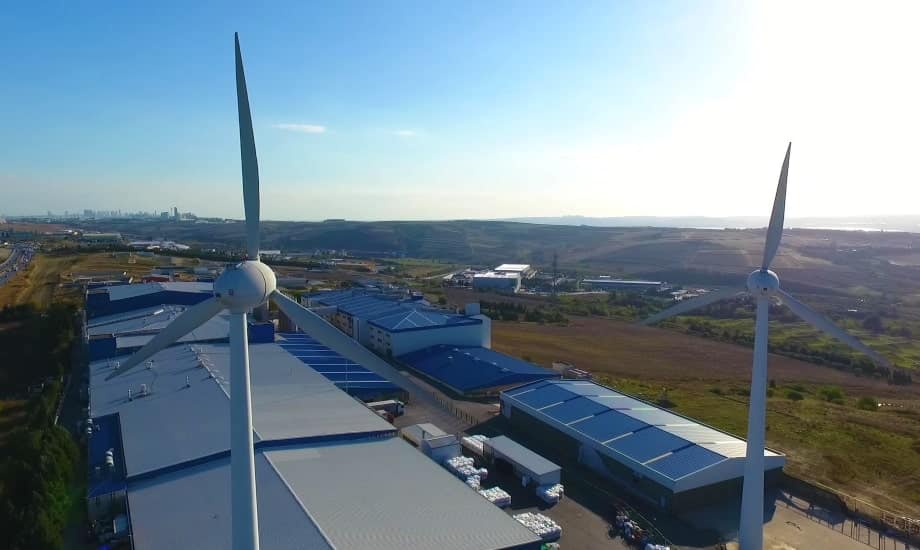
הפחתת VOC's באמצעות שימוש בצבעי חוץ על בסיס מים
Greif מחויבת להשתמש בצבעי חוץ על בסיס מים בפעילות שלנו במידת האפשר, במקום בצבעי חוץ נדיפים אורגניים (VOC). באריזה תעשייתית גלובלית (GIP) צפון אמריקה, שמונה מתוך תשעת מפעלי הפלדה שלנו משתמשים בצבעים על בסיס מים. ב-GIP סין, מפעל Greif Zhuhai עבר הסבה ליותר מ-75% צבעים על בסיס מים, ובשנת 2021, הם החלו לבדוק את השימוש בספינות תוף רגילות על בסיס מים במוצרים שלנו כדי להפחית עוד יותר את השפעת ה-VOC של המוצרים שלנו. מפעל Greif Shanghai החל בתהליך ההמרה גם בשנת 2021. ב-EMEA, צ'כיה, בלגיה, גרמניה, הונגריה ופולין משתמשות בצבעים על בסיס מים לצד צבעים על בסיס ממיסים.
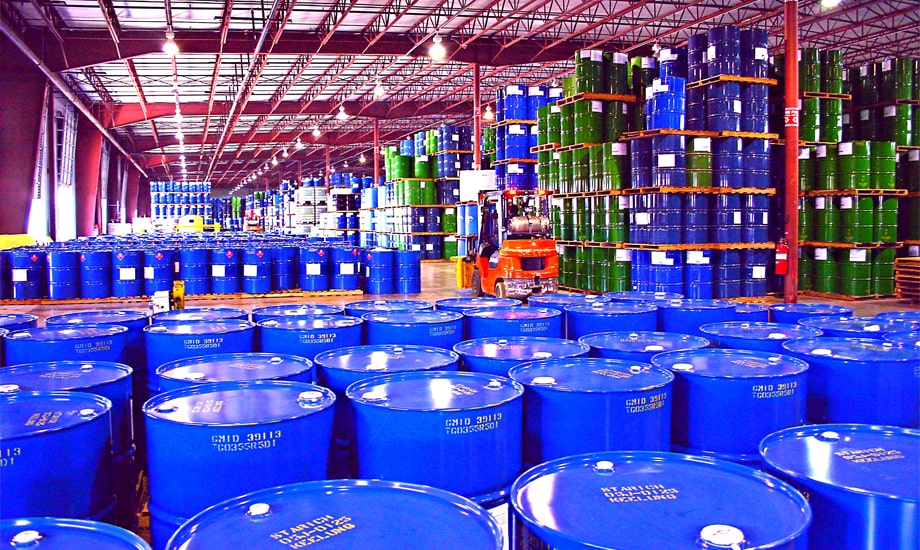
השגת הפחתת פסולת באמצעות מצוינות בשירות לקוחות
בשנת 2019, מתקן האריזה התעשייתית העולמית (GIP) של Greif בשוודיה קיבלה תלונת לקוח על כך שג'ריקנים נפגעו במהלך הפריקה מכיוון שסרט הפלסטיק ששימשה לעטוף את המשטחים היה הדוק מדי וקשה להסרה. בתגובה, המתקן בדק מספר חלופות של סרטים שקל יותר להסירם והיוו פחות סיכון לפגיעה בקופסאות הפח ובסופו של דבר בחרו חלופה שהפחיתה את השימוש בסרט ב-48 אחוז, וחסכה 7,500 ק"ג של חומרים בשנה. המעבר הוביל גם לחיסכון של $12,000 דולר והפחתה של 22,000 ק"ג בפליטות. על מנת להגדיל את הפרויקט, הצוות עדכן את נוהל ההפעלה הסטנדרטי לשימוש בסרטים דומים ועבד עם צוות הרכש שלנו לעדכון הספק והחומר לסרט.
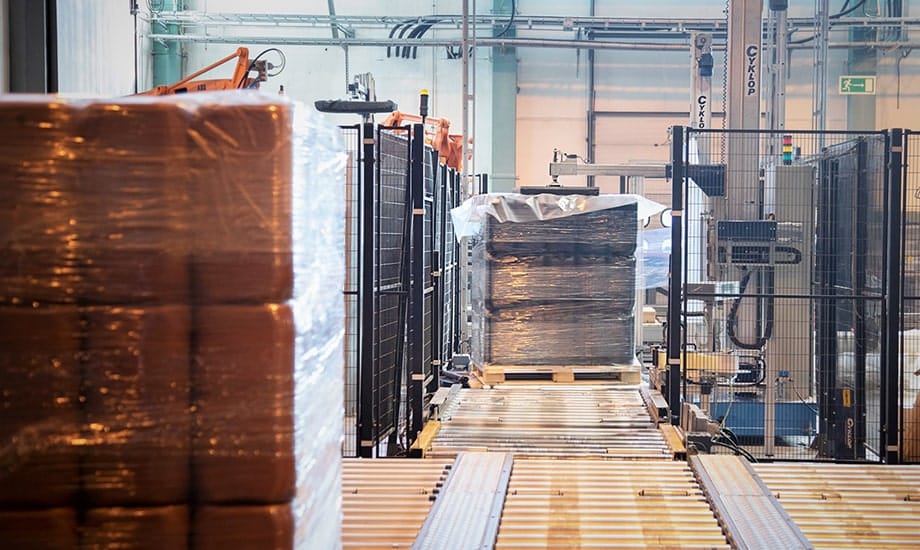
יוזמות מיחזור ושימוש חוזר במתקן GIP Flexibles
מתקן GIP Flexibles שלנו ב-Thirsk, בריטניה יישם מגוון יוזמות הקשורות למיחזור ושימוש חוזר, בשיתוף פעולה הדוק עם לקוחות וספקים. המתקן הציג תוכניות לשימוש חוזר במחלקי קרטון, משטחים, סלילי חוטים, ממס, שקיות על צינורות גלילים וגרוטאות עץ. יוזמות השימוש החוזר שלנו כוללות שיתוף פעולה הדוק עם ספקים להחזרת סלילים ומחלקי קרטון לשימוש חוזר, הפחתת עלויות והשפעות סביבתיות עבור שתי החברות. אנחנו גם עובדים עם הלקוחות שלנו כדי לאסוף משטחים וצינורות לשימוש חוזר שלנו. המתקן גם ממחזר את כל הפלסטיק, הקרטון, הנייר והממס שלא ניתן להחזיר. שיטות עבודה אלו עוזרות להפחית את טביעת הרגל של Greif ולעיתים קרובות יכולות להפחית עלויות, כגון הוצאות שריפה.
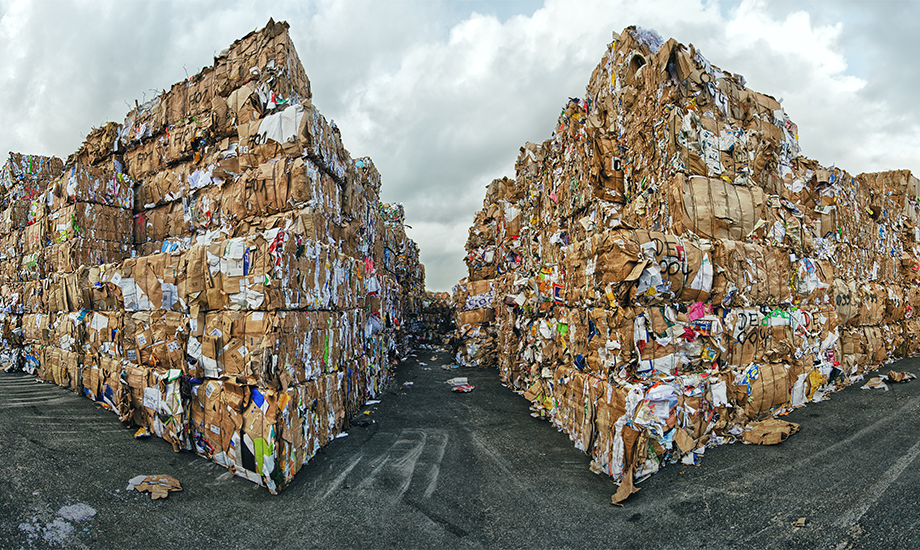
דגשים בנושא קיימות
85%
של פסולת שהופנתה ממזבלות
המאמצים שלנו לצמצם את הפסולת הם גלובליים, כאשר כל מתקן פועל לקראת היעד שלנו לשנת 2025.
50
מתקנים השגת אפס פסולת להטמנה
הדגשת שיטות הניהול הטובות ביותר לסילוק, צמצום והסטת פסולת.




